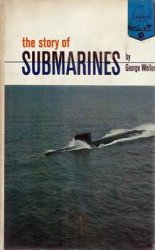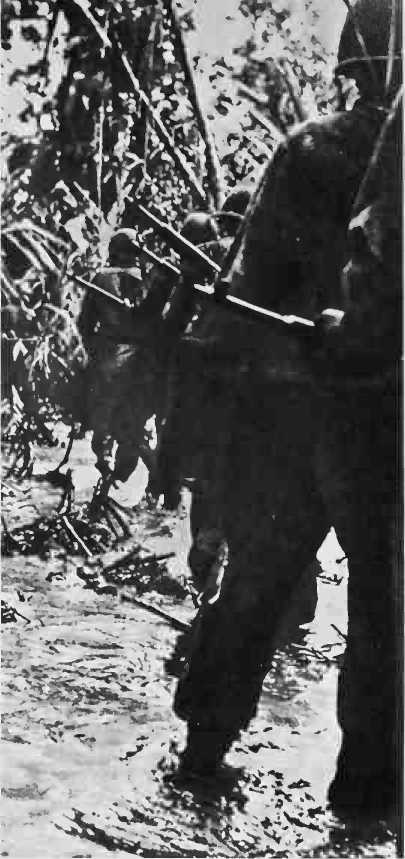
A G. Is tackle heavy jungle.
V Australians peer cautiously at some Japanese killed beside the track. Japanese sick and wounded, left behind by the retreating Japanese, frequently proved a great menace to the advancing Allies by lying in wait and firing at the first sight of an Australian or American soldier.
Horii’s men had two 70-mm howitzers, outranging any Australian weapon on the Kokoda Track, and light enough to be manhandled over the mountains. They
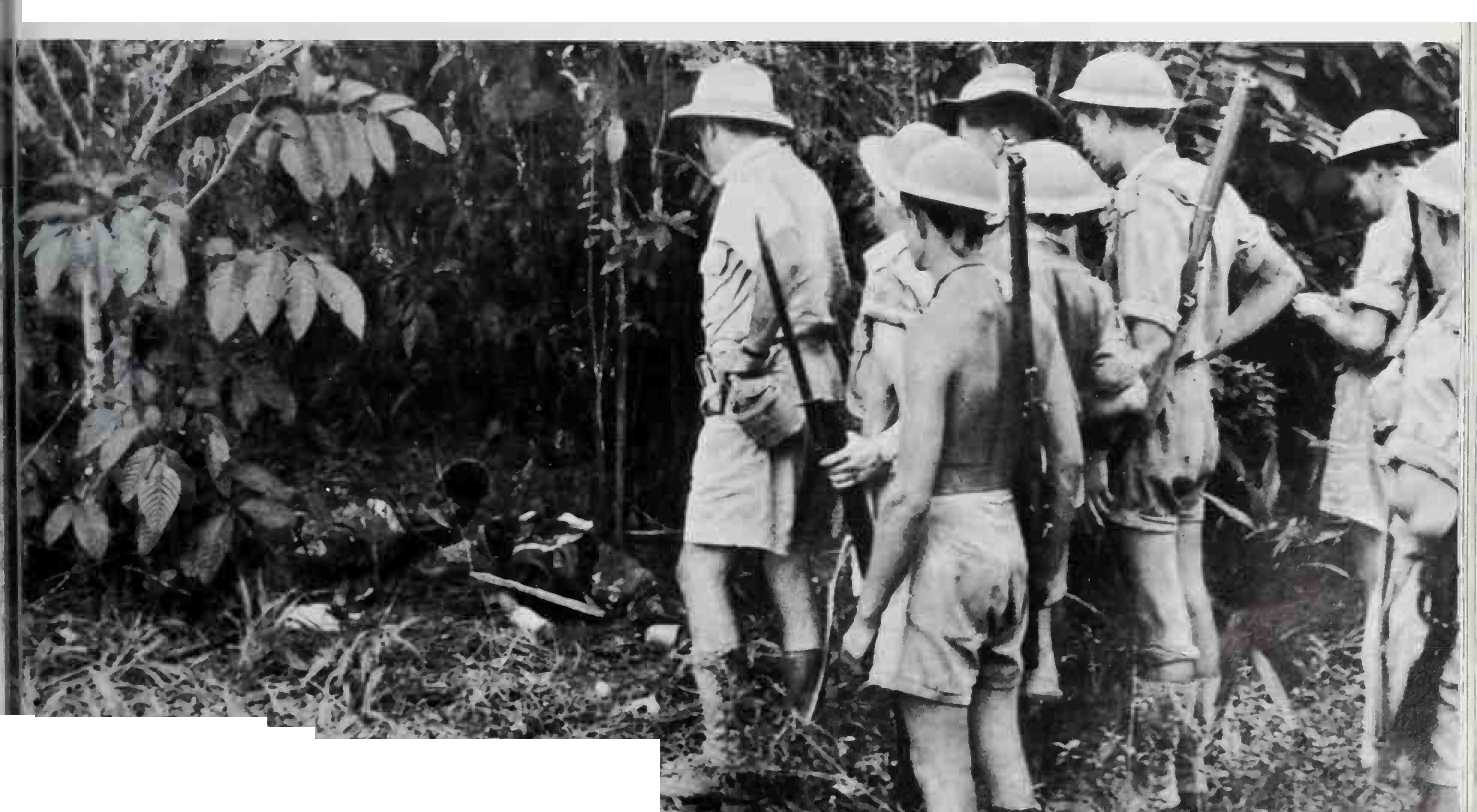
R;V.-Cr, .r*
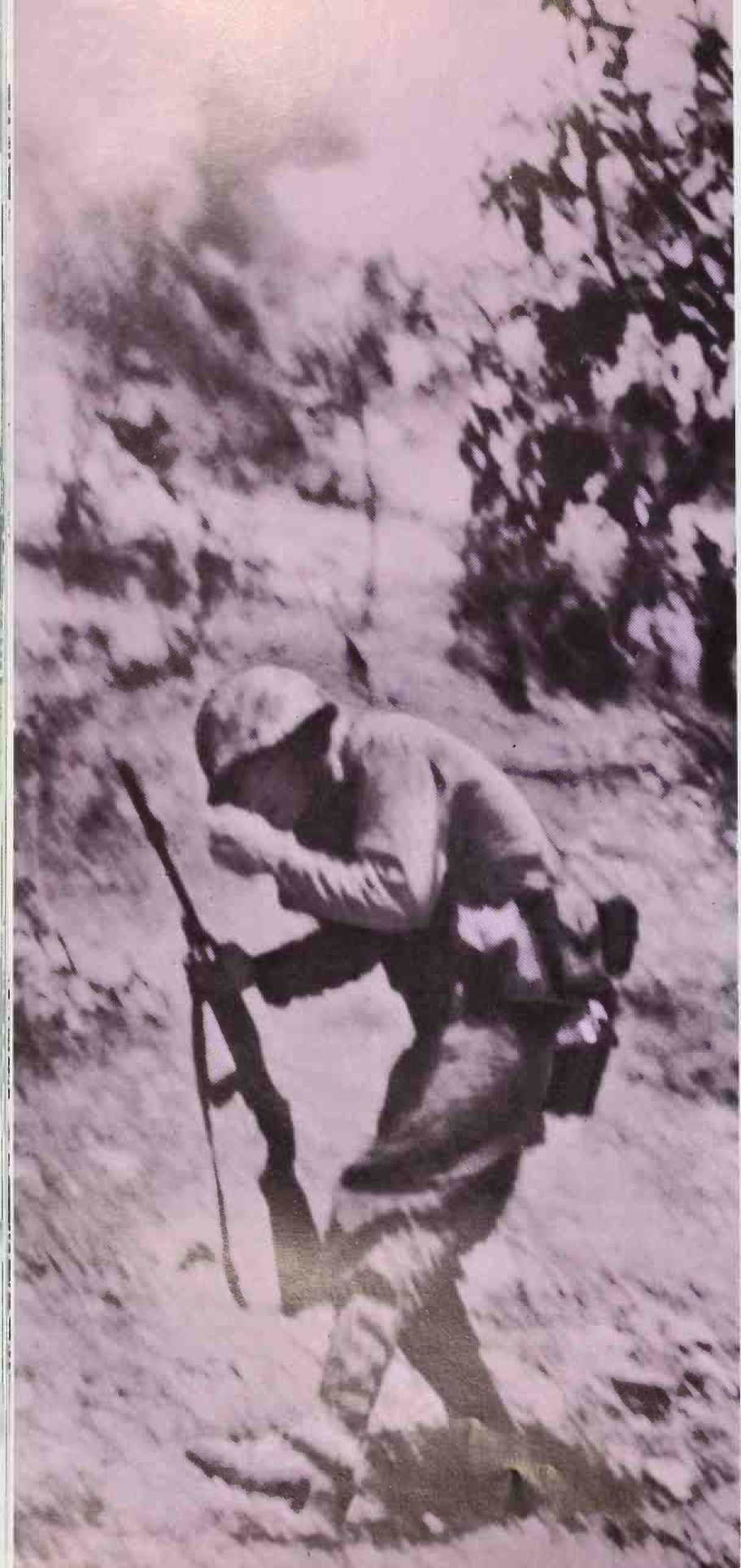
Had an efficient machine gun, the Juki, with a rapid rate of fire. They knew how to use their weapons to best advantage, outflanking and encircling prepared positions. They had been taught that they must not be captured, even if wounded. Their manual read, "Bear in mind the fact that to be captured means not only disgracing the Army but that your parents and family will never be able to hold up their heads again. Always save the last round for yourself.” They would fight to the death.
They were adept at night operations and preferred to attack in the rain. The manual told them that "Westerners-being very haughty, effeminate, and cowardly-intensely dislike fighting in the rain or mist or in the dark. They cannot conceive night to be a proper time for battle-though it is excellent for dancing. In these weaknesses lie our great opportunity.” In night attacks the Japanese smeared their faces with mud; officers wore strips of white cloth criss-
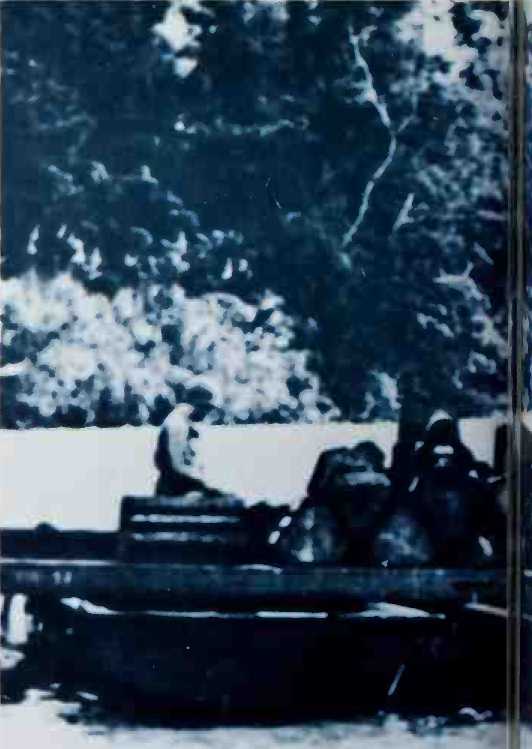
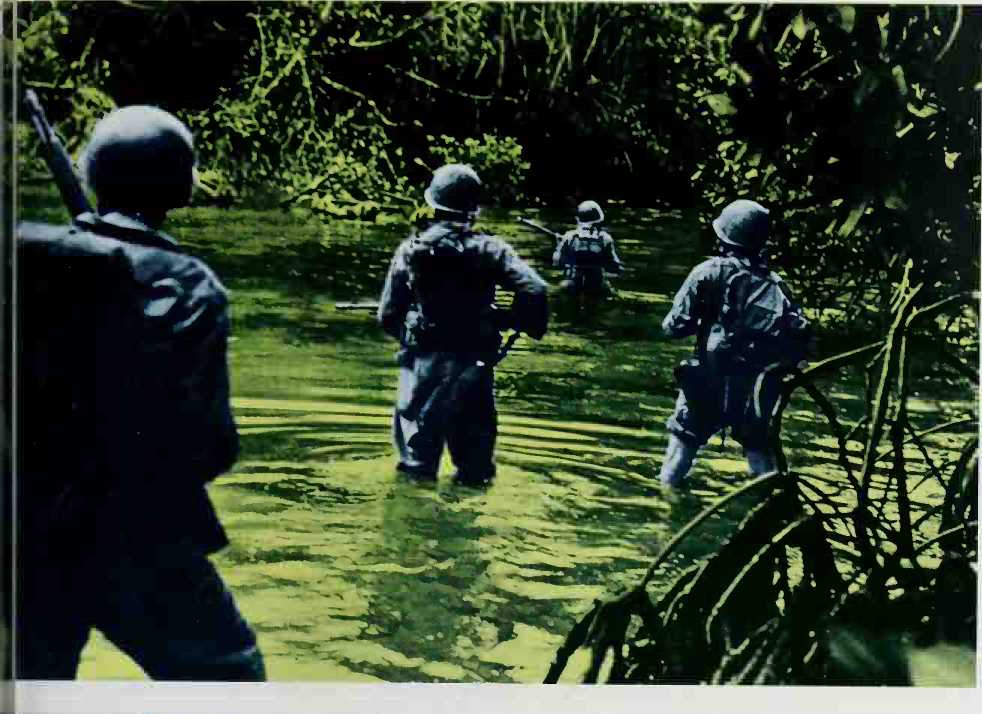
<3 < A U. S. Marine reels, struck by a Japanese bullet.
< Wading a stream, rifles at the ready, a patrol pushes forward.
V One more river to cross-this time by means of a more sophisticated pontoon bridge.
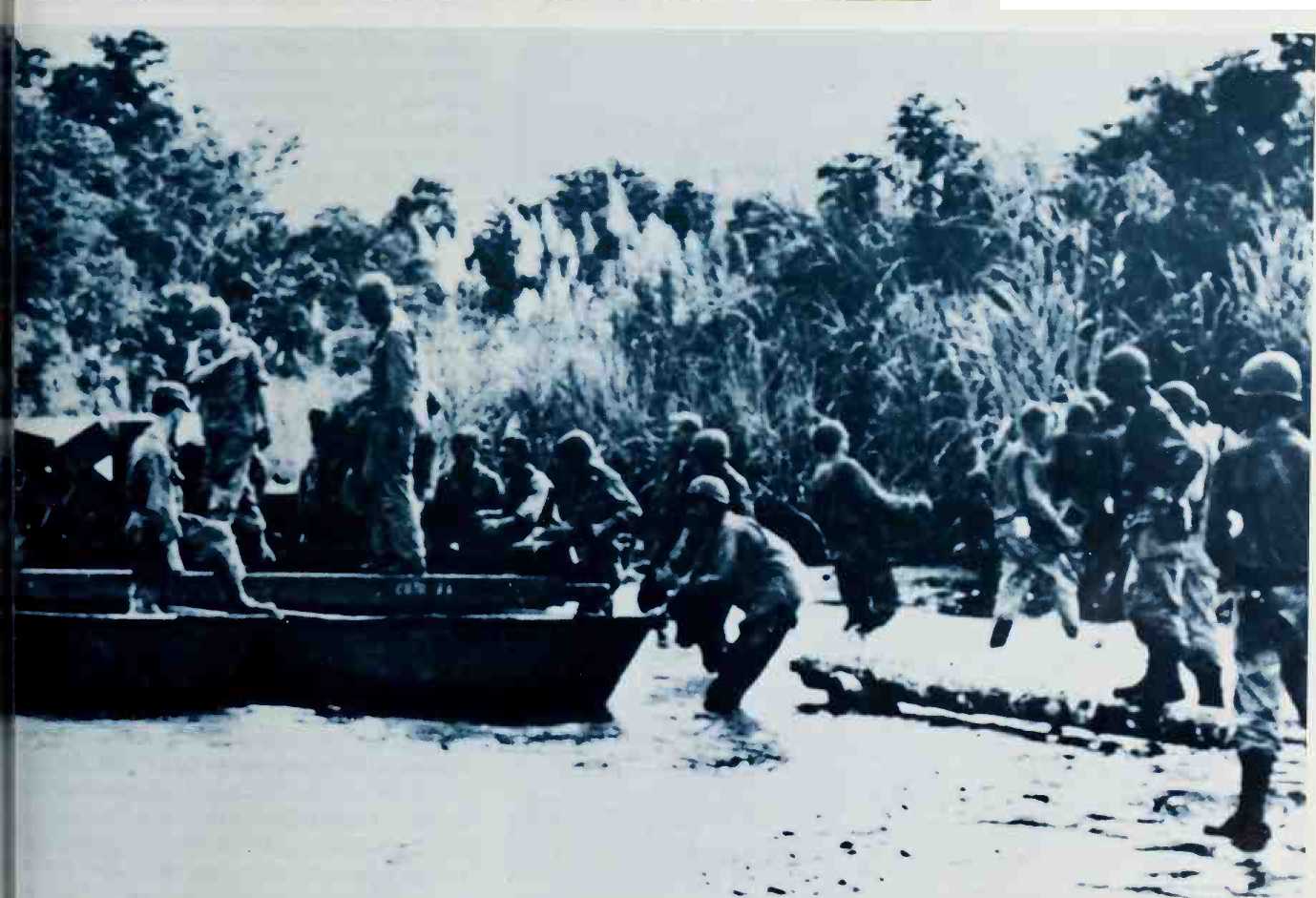
> Douglas A-26 Invader bombers head out for an air strike.
V American airmen line the bar at "Sloopy Joe’s", a popular canteen on the Port Moresby airfield for a quick cup of tea and a snack.
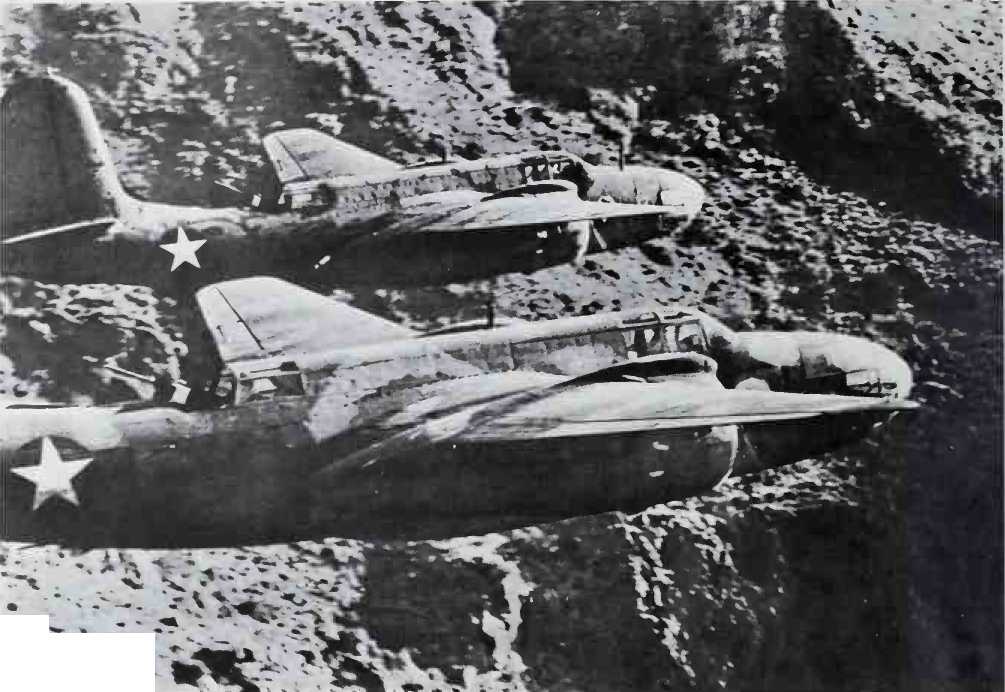
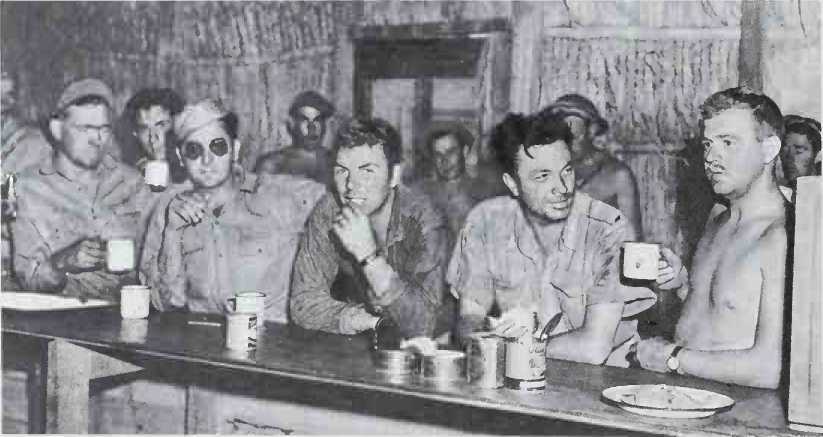
> > A One for the record: a Combat Photography Unit takes pictures on the scene of another jungle battle.
> > V Australians at rest in a native village. In the background can be seen a line of native recruits, dubbed "Fuzzy-Wuzzy Angels” for their magnificent work in carrying supplies and bringing out the wounded.
Crossed on their backs so their men could follow them in the dark, or doused themselves with perfume and issued orders to "follow your noses”.
The Japanese soldier was admirably equipped for jungle warfare. He was camouflaged by a green uniform and green leaves stuck in a net on his helmet; under his helmet he wore a cloth to keep sweat from running into his eyes. He had been instructed to add salt to his tea and salt plums to his rice. He was used to carrying heavy loads-the infantryman about 100 pounds-consisting of rice, powdered bean paste, powdered soy, hand grenades, rifle ammunition, a shovel, a pickaxe, and tenting; the artilleryman and engineer carried some 16 additional pounds.
Seizo Okada, arriving at Kokoda with Horii’s headquarters, observed that the soldiers had made "a kind of woodman’s carrying rack” for their load and "like pilgrims with portable shrines, carried it on their backs. Now they plodded on, step by step, supported by a stick, through those mountains of New Guinea”.




 World History
World History
